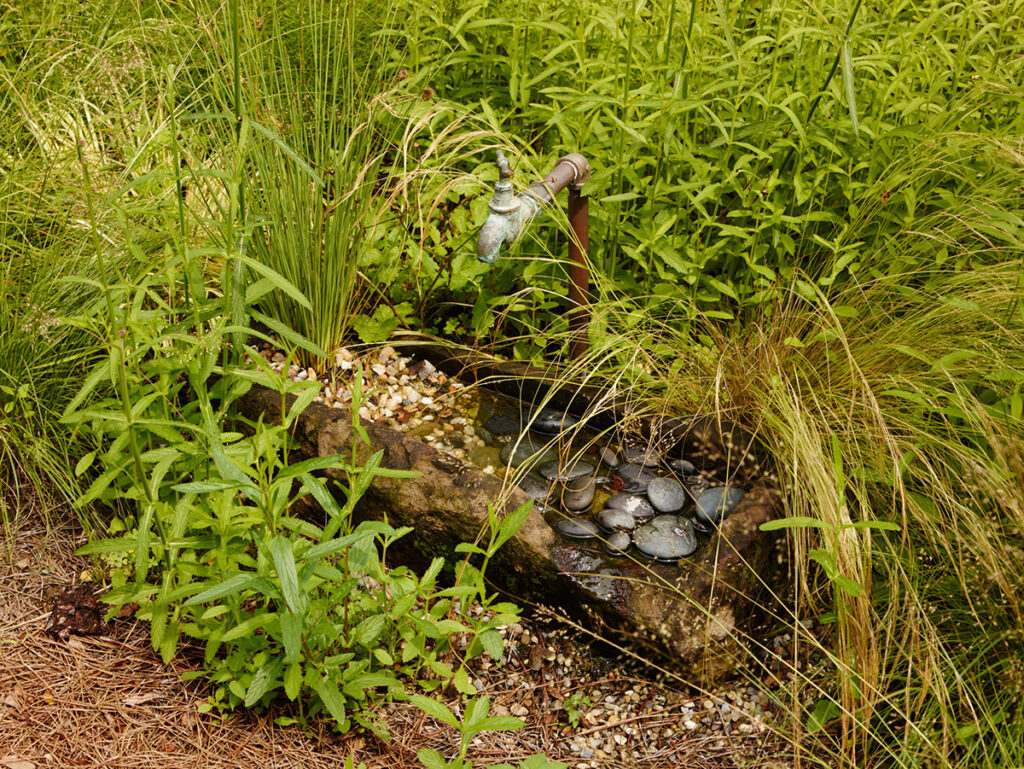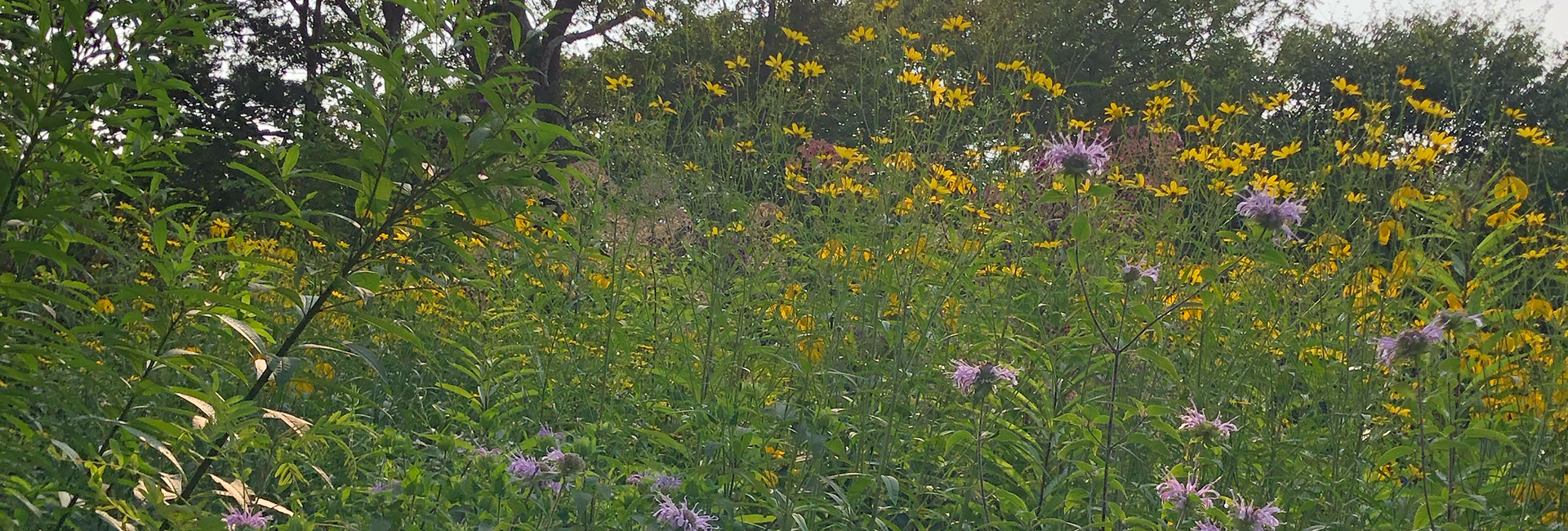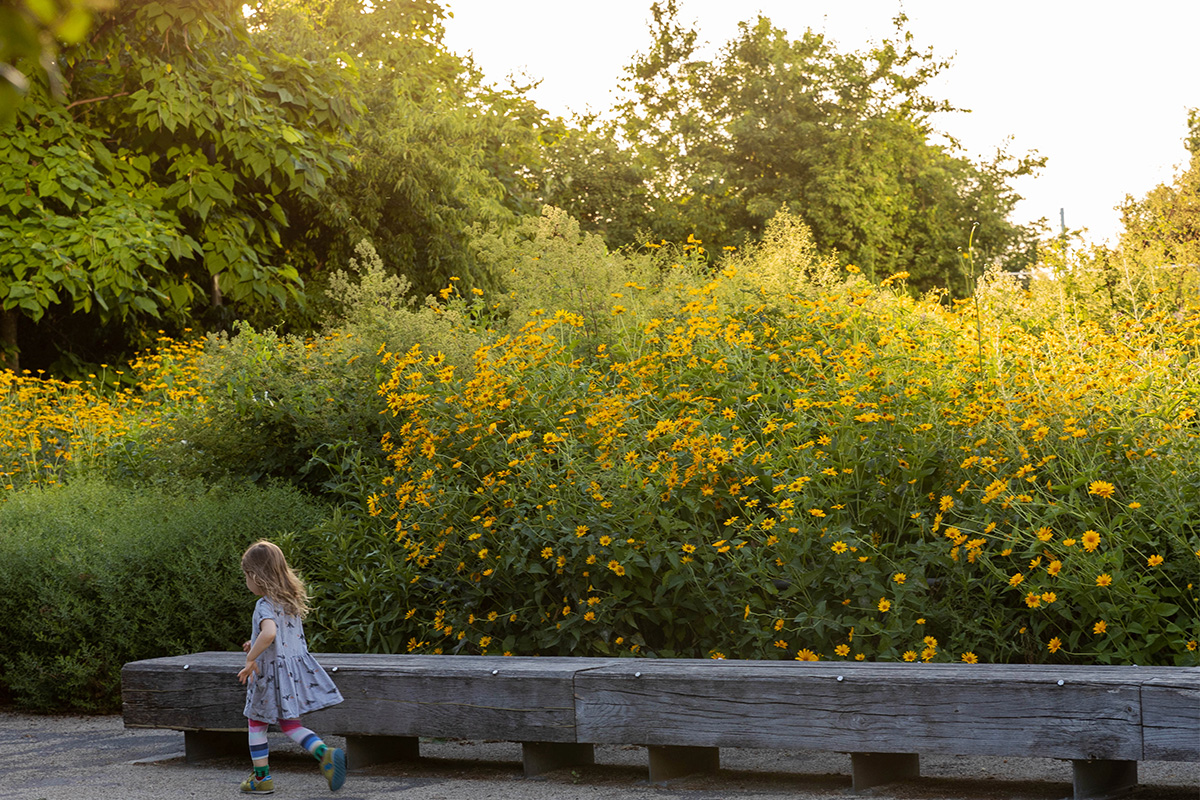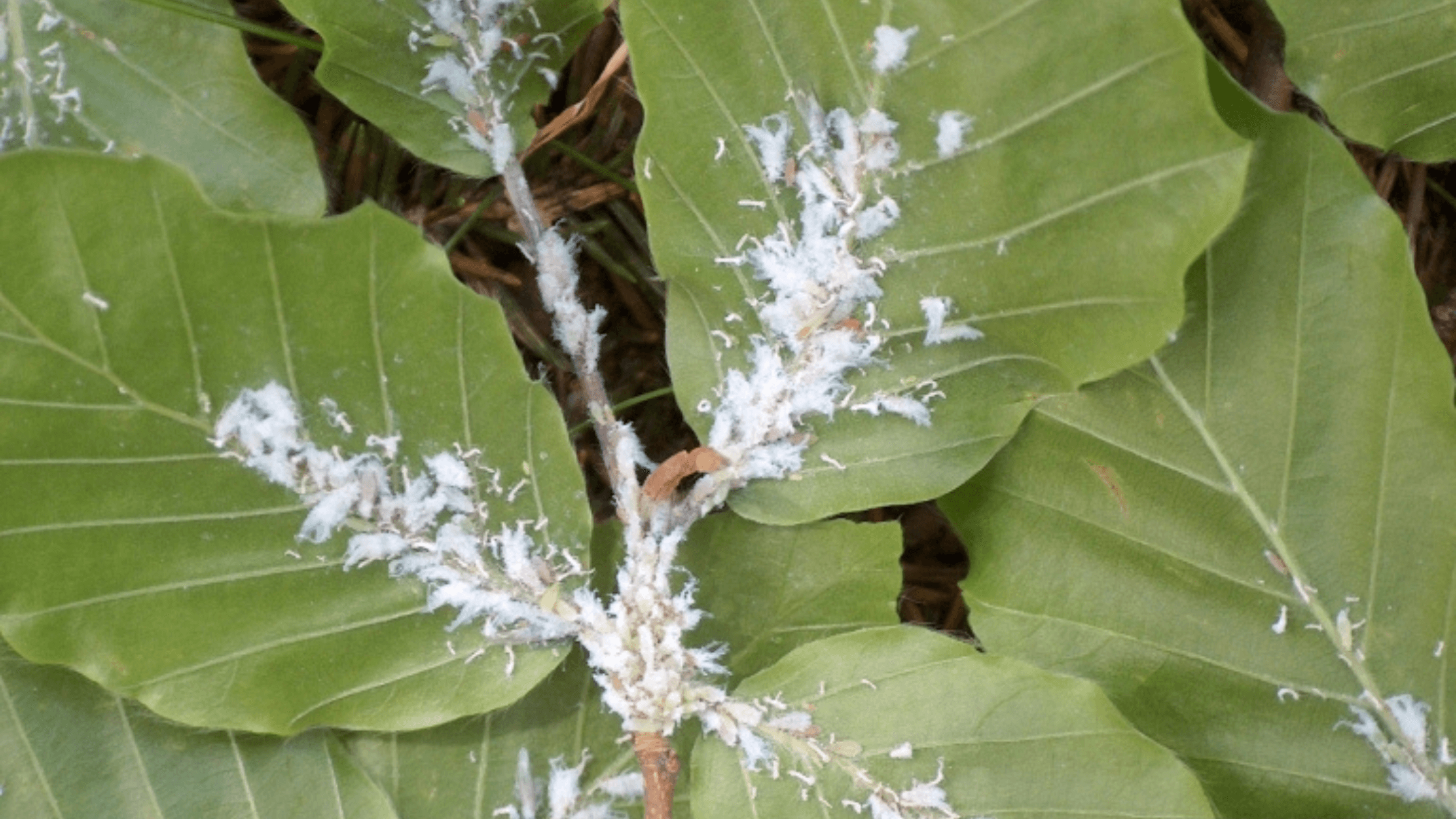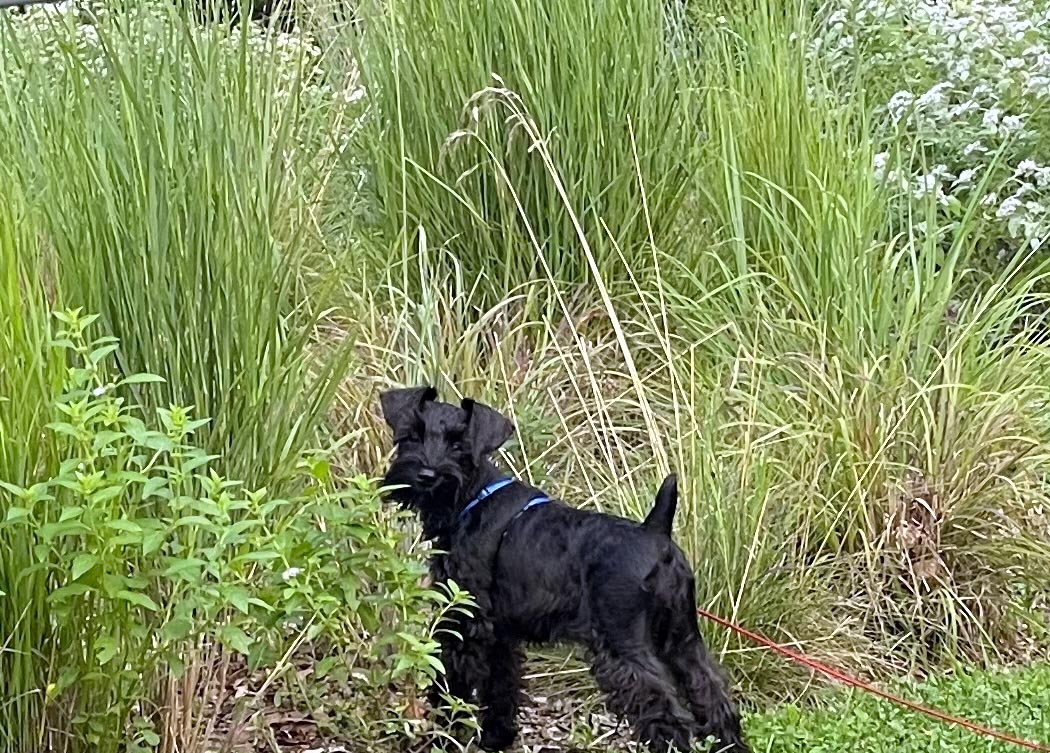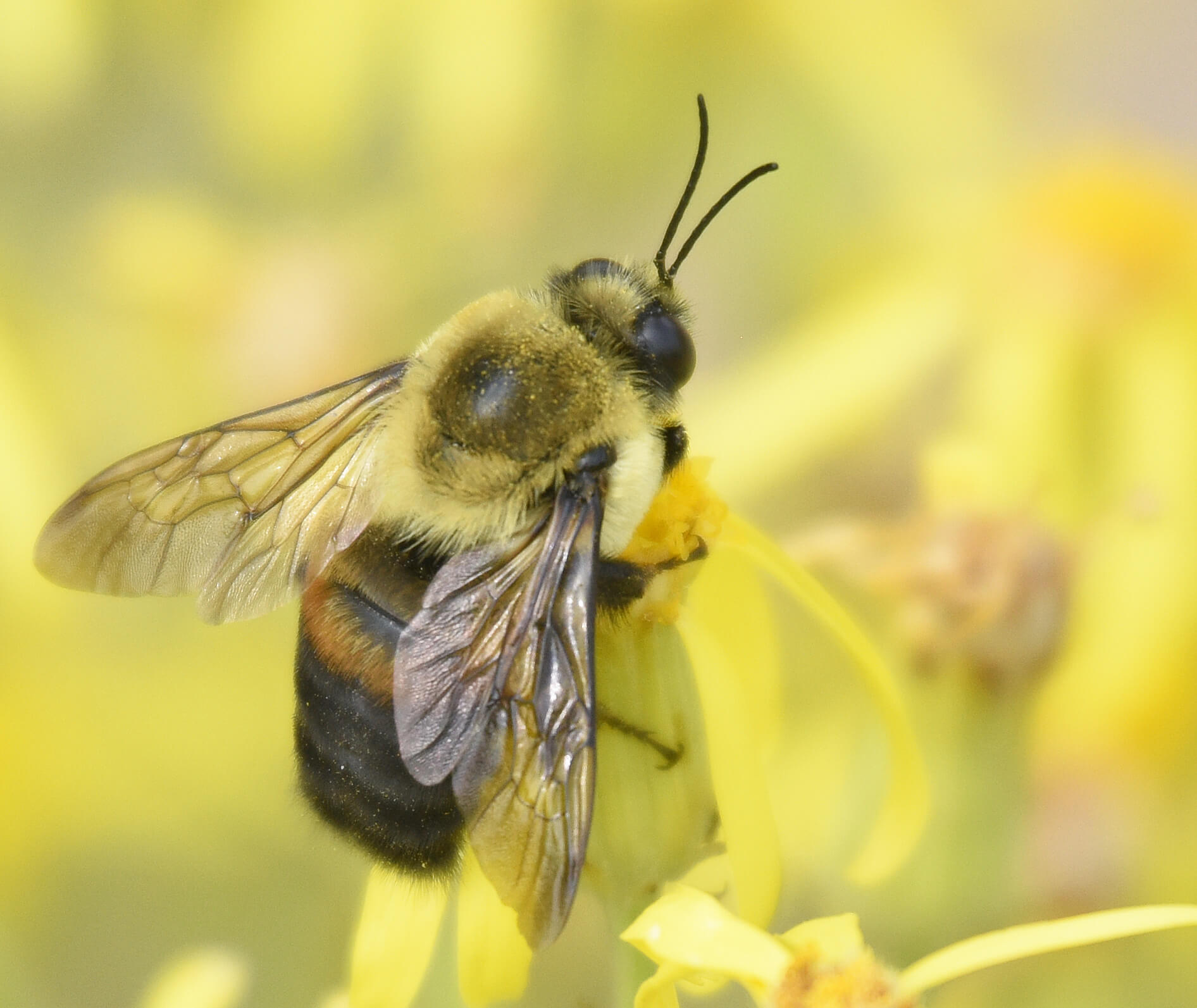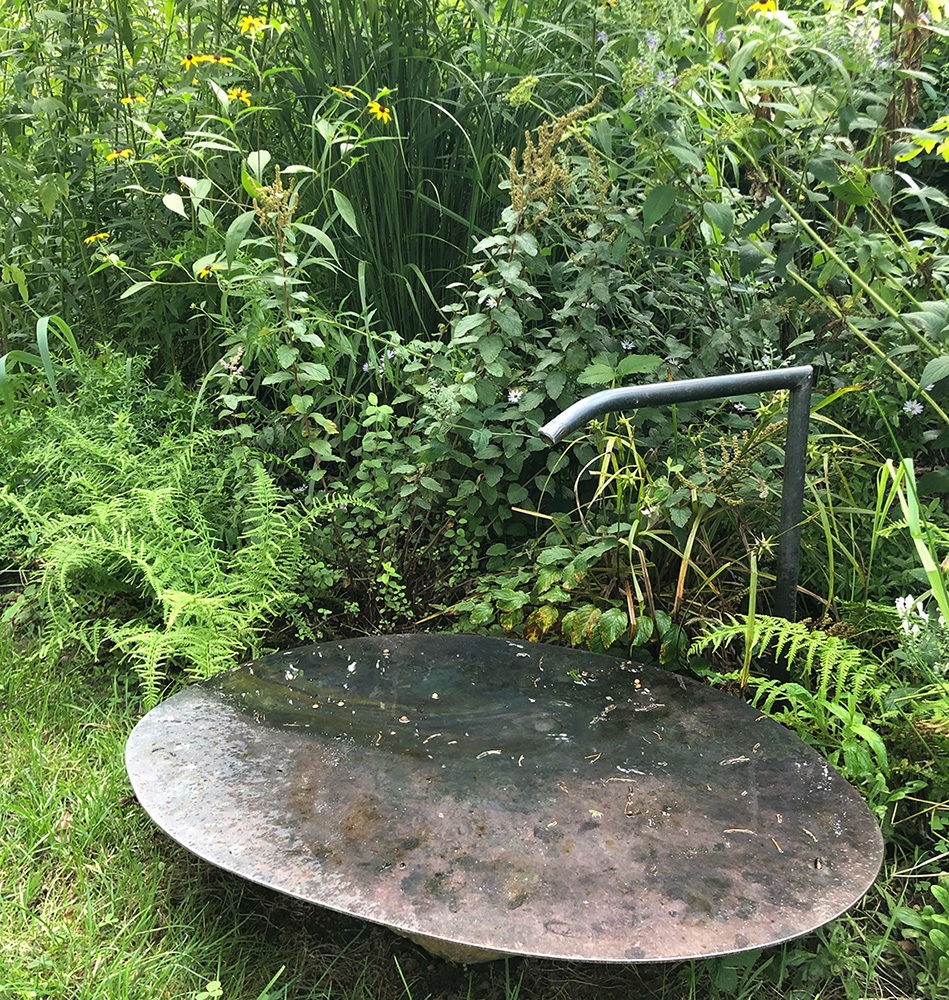
Maya Lin designed Edwina’s “bee beach,” which features a very slow drip of water. You can also create one at home using a shallow bowl filled with large pebbles that sit above the waterline, so bees can perch safely and take a drink. (See below.)
Bees need pesticide-free flowers for nectar. They need safe places to rest and to nest. For some that is open stems in which to lay their brood for the coming year, for others it is mud—little potters building their homes. And all along, like all pollinators, bees need water: for making mud, for making honey, and, of course, for drinking.
Birdbaths often have sharp, thin edges, which can be difficult for bees to get a grip. They’re also generally too deep for a bee’s tiny legs, and, of course, they can’t swim. I want to make it easy for them and other pollinators, like butterflies and wasps, to have a drink in my garden.
According to Xerces, “Providing a shallow source of unpolluted water for bees and wasps can improve their overall chances of nesting successfully by reducing the time they need to forage, as well as their risk of exposure to pesticides.” Maya Lin designed this slightly curved metal “potato chip” that’s fed with a slow trickle of water. (And to make sure the water isn’t wasted, I’ve made it the place where I can grow water-loving plants.) Bees can simply stop by, take a sip, and be off. I call it my bee beach. It’s open for the season. All pollinators welcome! —Edwina von Gal
Read more about how you can support native bees here.
